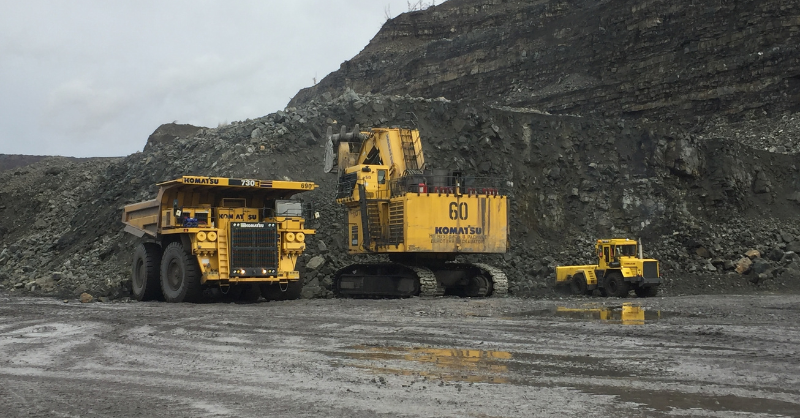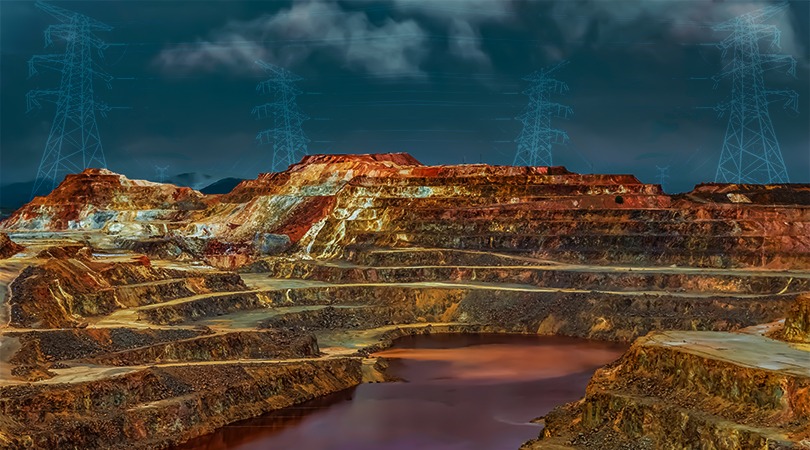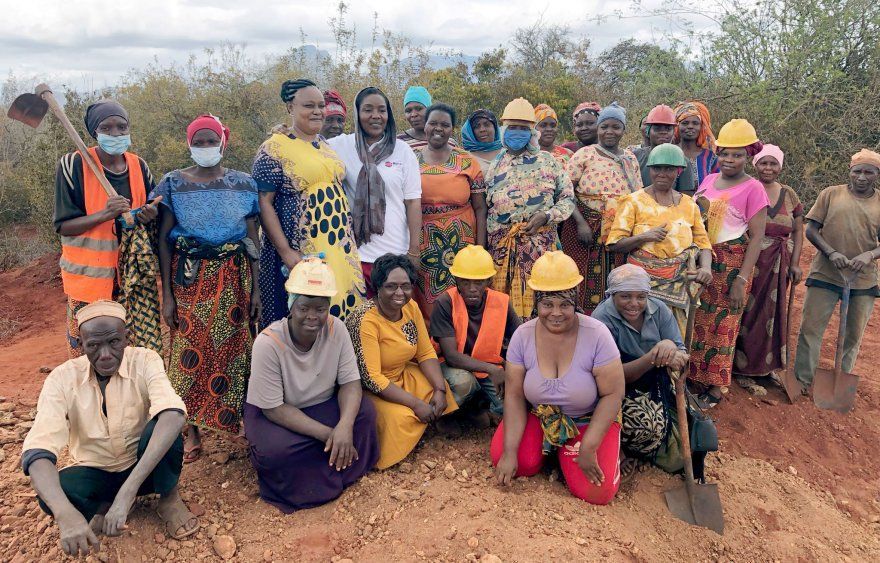
We need more (sustainable) mining
If we want the sustainability transitions to actually happen, especially in energy and industry, then we have to accept that more mining (of some minerals) needs to happen. Full stop.
I know we keep saying this - but it's worth repeating. Because it's so important. If we want the sustainability transitions to actually happen, especially in energy and industry, then we have to accept that more mining (of some minerals) needs to happen. Full stop.
Yes, we could allow this mining to take place elsewhere. Some place where we can 'look the other way' when it comes to environmental and social impacts. But is that really the outcome we want?
Rob Karpati, from The Blended Capital Group has started writing on this topic for us. Given what we do, his blog has a decidedly sustainable slant to it. He writes about how we can both meet the growing demand, and make mining more sustainable. But it requires us to make some tough choices. If you want to understand the scale of the change needed, we have provided a couple of links in Rob's blog.

The details
Delivering the energy transition requires significant mining growth
The rest of this blog is mostly from Rob, with a bit of light editing on our part.
Delivering the energy transition requires significant mining growth. With clean energy solutions requiring a variety of critical minerals, growth outlooks appear daunting.
The IEA estimates massive growth in demand:
● Copper - 2022 clean technologies demand was 5,736 KT. Estimated 2050 demand under their net zero scenario is 17,351 KT. 2050 demand is 3 times 2022
● Lithium - 2022 clean technologies demand was 130 KT. Estimated 2050 demand, again under the net zero scenario is 1,313 KT. 2050 demand is 10 times 2022
● Nickel - 2022 clean technologies demand was 457 KT. Estimated 2050 demand (net zero scenario) is 3,768 KT. 2050 demand is 8 times 2022
Demand growth estimates are similar for other critical minerals. These are massive increases, especially for an industry that is struggling with a combination of environmental and social opposition, and an investor base reluctant to fund 'too much' future capex - having been burnt before.
The pipeline for supporting this growth simply doesn't exist today. BHP recently estimated that we need 140 new copper, 60 new nickel and 50 new lithium mines by 2030 in order to meet projected demand. Active exploration projects that support growth at this scale are not in progress at present.
Editors note - If you want to learn more about the scale of the challenge, we recommend the recent blog series from Kathryn Porter at Watt Logic. There are a number of other reports that have been published, including a series from the IEA, of which the latest is Critical Minerals Market Review 2023. But, Kathryn's is way more readable !

Key opportunity areas from a sustainable investor perspective include:
Blended Finance
McKinsey Consulting estimates that $250-300B of capital investment is needed by 2030 to finance copper and nickel growth alone. Mining investment has not been increasing, with investors risk focused given the combination of traditional industry risks, institutional memory of the last super-cycle where many investors were impacted in 2014, and emergent risks from geopolitical, social and environmental realities that add further concerns.
Blended finance leverages traditional mining investors with public financing and with non-traditional private investors. Leverage catalyzes growth as differing investor classes come together. From a public sector perspective, the U.S. Inflation Reduction Act is the clearest example of public financing in mining. End-customers, especially OEM's, have become mining investors, with companies like Ford and General Motors locking-in supply through investment. Non-traditional investors have also engaged in mining, like Bill Gates and Jeff Bezos who have invested in Kobold, a company focused on critical minerals growth.
The opportunity for the mining industry is to flexibly seek out and engage in blended financing, where financing from non-traditional sources continues to catalyze and accelerate critical minerals growth that is needed along with more traditional investors. Specific blended financing schemes vary of course depending on the composition of public and private players, but opportunities to deploy capital at scale depend on widening the capital pool available for investment as non-traditional players enter the industry.
Editors note - blended finance is not just applicable to mining. It's also a technique that can open up opportunities right across the spectrum of sustainability. The key here, from a finance perspective, is risk allocation. It's a bit like project finance, that has been around for a long time. But, for it to be scalable, we need to find ways of standardising the metrics and risk allocations. Bespoke solutions are just too expensive. We recently wrote on this in relation to rice.

Community and Indigenous Centric Focus
Communities make or break conflict-free projects. Engagement that builds trust and supports earning social license is critical to reduce risks of conflict as well as land rights delays that could occur when communities push back. Copper is a mineral that has seen significant conflict impacting supply, ranging from the First Quantum situation in Panama through to the Tia Maria and Las Bambas projects in Peru.
Fit for purpose engagement requires flexible approaches that lead to differentiated collaborative solutions with communities given differing local socio-economic realities. Recognizing that 54% of critical mineral projects are on or adjacent to Indigenous lands, Indigenous engagement is a key subset of broader community engagement. Local content is a natural element of solution designs, but it is one of many, recognizing the need for flexibility and targeted engagement.
Artisanal Mining (ASM) Formalization
ASM is a tremendous opportunity area for bridging supply gaps. Today's largely informal manual-based artisanal mining sector already generates significant volumes, including close to 20% of global cobalt production, 5% of copper and significant quantities of nickel, manganese and other critical minerals.
Professionalizing ASM, which includes equipping, training and shifting toward good practices, can multiply production by 2X, 3X or even by 5X - recognizing that they are already producing significant tonnage, this productivity increase will be significant relative to existing gaps. Artisanal miners are often found on land concessions of large mining projects, where collaboration can also increase productivity of the large project as risks are replaced with collaborative mindsets.
ASM formalization makes commercial sense. Formalizing 1,000 artisanal miners may cost $150-200K, taking 12-18 months. Transitioning from pre-exploration through to operations for a large copper project may cost $10B+ while taking 15+ years. Recognizing that it takes many artisanal mining locations to deliver the tonnage of a single large mining project, the cost and timeline differences speak for themselves.
Editors note - this is a topic that Rob has written extensively on for us already. The blog below is a good place to start.

Strong Responsible Mining Practices
Responsible mining practices are a competitive advantage for adept companies. Ensuring that social and environmental stakeholders are engaged toward win/win outcomes changes narratives for mining projects, switching from potential conflict orientations toward collaborative productivity. In an environment where critical minerals are supply constrained, responsible practices are strategic, not just for individual mining companies that can optimize value from fit for purpose relationships, but for the industry as a whole, where delivering necessary tonnage is directly supported by practices that reduce risk of conflict, legal and PR challenges.
The UN Mining 2030 Investor Commission is focusing discussion on what aligned standards for responsibility should look like, what the implications are for investors and for mining companies. The scope of the Investor Commission includes both large scale and artisanal mining. As their work progresses, enhanced clarity on what the implications of responsible practices for investors and for broader stakeholders needs to be followed by capacity development across the industry, where necessary skills and practices are fostered for delivering successfully.
Editors note - there are various asset owner led initiatives that are looking to tackle these issues. One that we have discussed previously is the Investor Mining and Tailings Safety Initiative. You can read more about this excellent project via the link below.

Summary
The mining industry is faced with considerable challenges in growing capacity that meets demands of the energy transition. Success is not guaranteed, but will be facilitated by flexible mindsets that enable collaboration across a variety of domains. Whether blended finance, artisanal mining formalization, community-centric approaches or the other areas discussed in this article, focus on collaboration not only means doing things differently from the past, it means ensuring that business models flexibly target differing stakeholders in a variety of circumstances, where value is optimized as needed growth is delivered.
The financial imperatives from this work are clear – productivity equates to value – but the essential driver, engagement that results in collaboration, requires a mindset that is focused on stakeholder-relevant opportunities and approaches for building trust.
Rob works as part of The Blended Capital Group. They believe that "the role of capital in catalysing sustainable human progress has never been more critical. To ensure it does requires us to tinker with the system by re-purposing public and private sector agency, localising finance and capitalising community assets".
You can read more about them and their work via the link below.
Note that publishing Rob's blogs, and providing the link below, is not an endorsement of them or their work.

There is no doubt that the extra-territoriality concept of “exercising effective control” as it has been developed for States over the past decades as well as using human rights norms as the basis for cases suing for damage and change on environmental issues is a new normal. This means that extra-territorial obligations will become ever more important (a subject we will keep coming back to in future blogs).
Something a little more bespoke?
Get in touch if there is a particular topic you would like us to write on. Just for you.
Contact us
Please read: important legal stuff.




